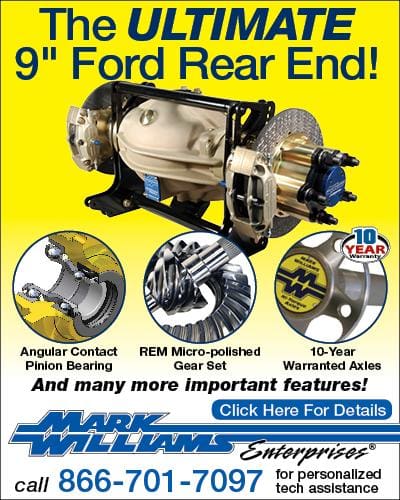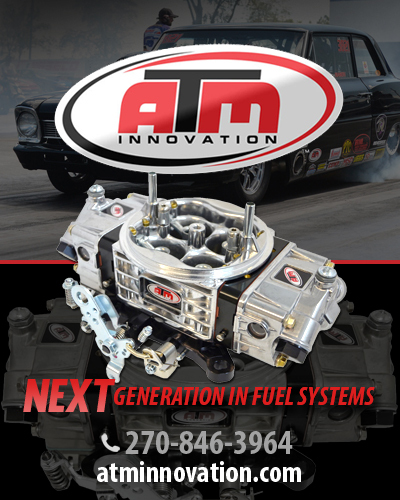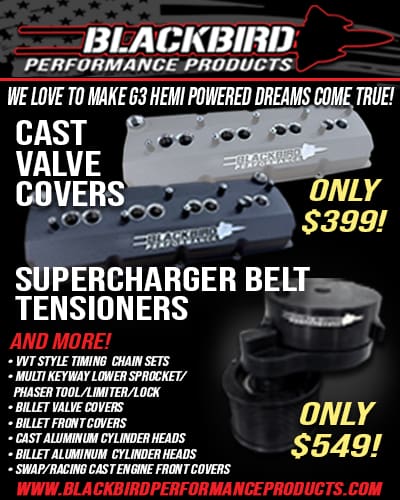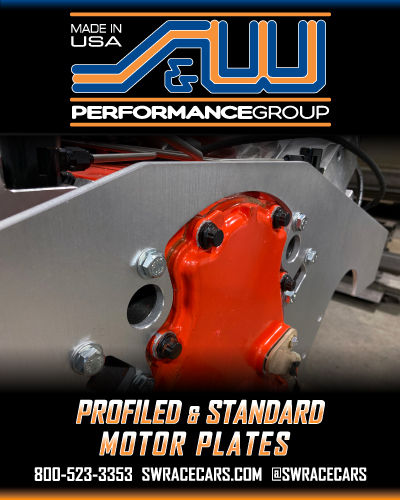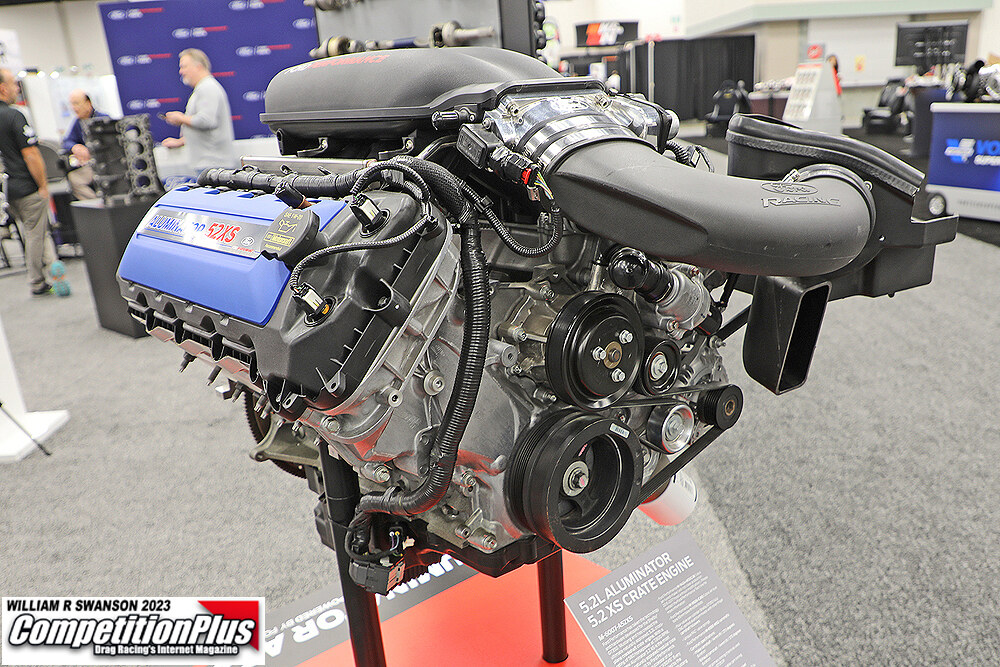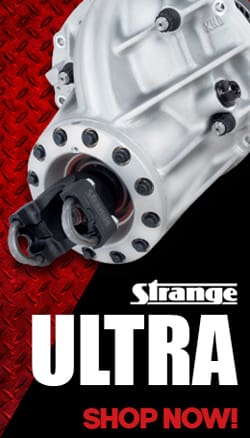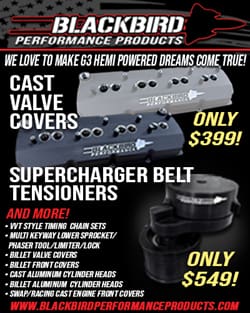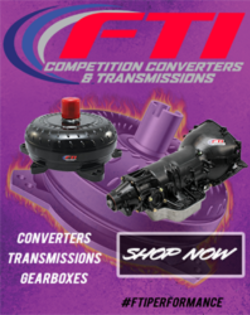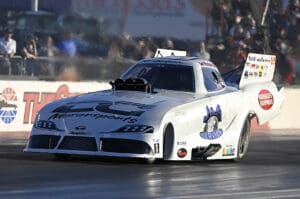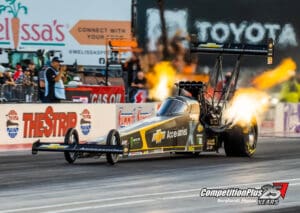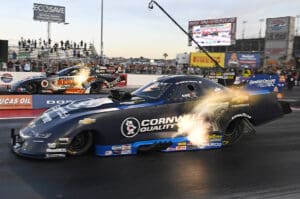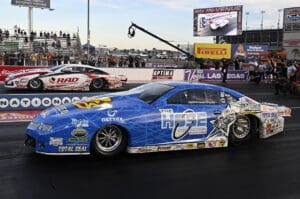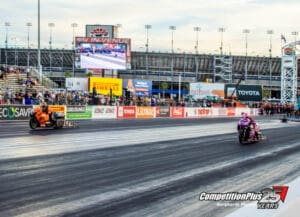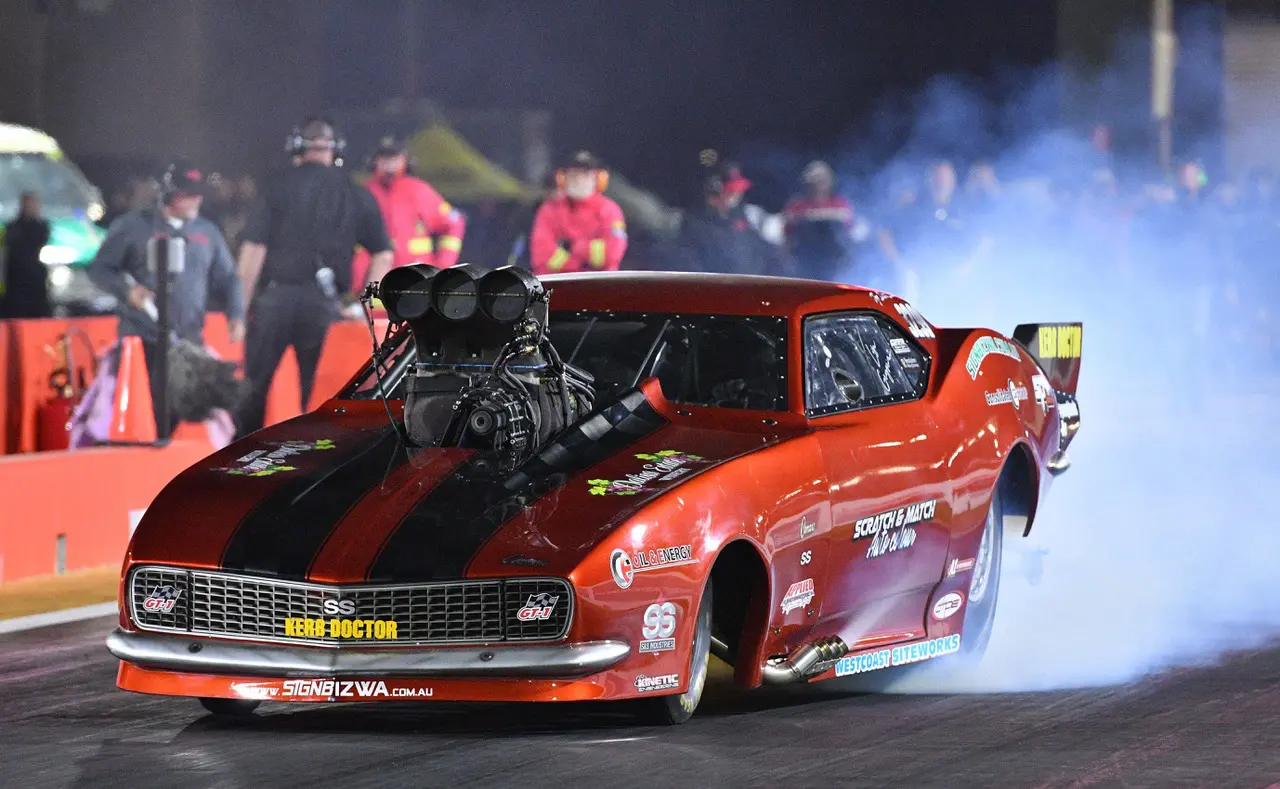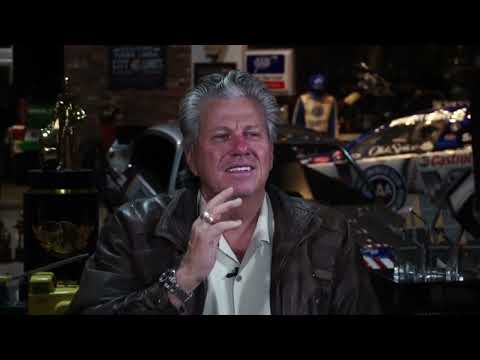Originally published November 2008

The cover blurb on the October 22, 1981 issue of National DRAGSTER said it all.
1982 Rules: Pro Stock Revamped.
 The NHRA decided they’d had their fill of the pounds-per-cubic-inch format which had defined the Pro Stock division since its inception in 1970.
The NHRA decided they’d had their fill of the pounds-per-cubic-inch format which had defined the Pro Stock division since its inception in 1970.
The continual factoring of the leading Chevrolet and Ford combinations had proven aggravating at best, and controversial to say the least.
The Pro Stock division would now be based on a universal 500 cubic inch limit with a weight of 2,350 pounds.
“This will allow racers to match race without the major changes now required and should make the General Motors, Ford and Chrysler cars very competitive with one another. It is felt that all engines are compatable (sic) at the 500 cubic inch figure.”
Thus was the statement the sanctioning body passed on to its racers with little, if any advance warning that such a drastic change was coming. Many greeted the change with open arms but those in the know during that era will tell you the decision had very little to do with match racing and everything to do with image.
The IHRA’s Pro Stock division had made a mockery of the NHRA’s Pro Stock efforts in the media and on the scoreboards of the former’s inferior facilities.
The IHRA had seven second Pro Stockers and the NHRA didn’t.
Warren Johnson, credited as the winningest NHRA Pro Stock driver ever, won his first three NHRA national event victories in the same season the NHRA introduced the 500-inch engines. He believed the NHRA was on the losing end of two major battles: the technical department who had to factor parity and the public relations front.
“The NHRA was at the point they were pulling their hair out trying to keep things level in the factoring process,” Johnson said. “They were constantly adjusting on a weekly basis. Then you had the IHRA cars running consistently quicker. That created the stimulus for the NHRA to look at setting a common displacement of 500 and weight. It was smaller than the IHRA’s engine but a step up from the small block. It solved two problems; it got rid of the headaches and sped their cars up.”
Bob Glidden said that he and his Pro Stock constituents had no idea the change was coming.

“Not one single warning,” Glidden recalled. “We really didn’t have any sort of an engine to use. The majority ruled in this case and it was the GM guys who pushed for it. It wouldn’t have mattered because the majority ruled in this issue.”
Glidden and the handful of Ford racers began their 500-inch programs on an engine combination derived from the legendary Boss 429 block.
The Mopar runners didn’t have quite as tough of a time preparing for the new era but at least they could play. Under the previous rules package, the Mopar cars were clearly at a disadvantage by the rulebook.
According to then Mopar stalwart Roy Hill, his Chrysler Hemi engines didn’t displace the full 500-inches but then again, they didn’t have to run as much of a weight penalty either.
“It worked out perfect for me,” said Hill, who ran both NHRA and IHRA with vastly different combinations prior to 1982. “I already knew how to run the big engines and I was able to find a combination quickly.”
The first 500-inch NHRA Pro Stock event took place at the Winternationals in Pomona, CA, and provided the sanctioning body what they wanted.
On the first day of qualifying, the trio of David Reher, Buddy Morrison and Lee Shepherd established a new world record with a 7.84 elapsed time and quickly surpassed the 7.89 mark that Ronnie Sox had established on the IHRA side.
Shepherd’s mark quickly fell to Frank Iaconio’s 7.82 recorded en route to his monumental victory in this new era.

If anyone deserved to win that first race it was Iaconio as the fenders on his 1981 Camaro had become nothing more than a revolving door at the whims of the NHRA tech department.
Here’s just a sampling.
Iaconio started the final season of the pounds-per-cube era with a potent 331-inch Chevrolet and had finally ironed out the wrinkles to the combination when the NHRA decided enough big blocks were available in the class and offered a weight break.
He and a handful of Chevrolet Pro Stock racers were forced to trash all of the small block technology and chase a rat motored combination. Iaconio had literally finished the new engine combination in the tech line during the 1981 U.S. Nationals in Indianapolis where he drove his way to the No. 1 qualifying spot for much of provisional qualifying.
A month later the NHRA handed down the 500-inch edict.
Pat Musi was one of those racers caught in the game of horsepower limbo. The experience was something he reacted to differently than fellow Jerseyite Iaconio.
Musi simply quit.

“It was frustrating because I had just gotten my small motor program working real well when they decided to open it up to 500 inches,” Musi said. “Then I had to return to the big motors all over again. It was just a big mess. You didn’t have to push me out the door; I was already walking through it.”
Even after winning, Iaconio felt the pinch of what he expected to be the next level of Pro Stock racing in general.
“I felt great about the title for a little while, but I knew I had to get to work for Gainesville,” Iaconio lamented.
It wasn’t just the engines that brought forward an immediate challenge. The chassis posed a problem for at least one of the veterans.
Nevermind the fact Glidden had zero engine technology for 500 inch Pro Stock racing his new Ford EXP built by Don Hardy and carried to battle a 94-inch wheelbase.
This was a far cry from the Fairmont he’d campaigned the two previous years. After winning over one-half of the contested NHRA national events in the previous three seasons, Glidden won only one event with the EXP.
Glidden only ran the less than attractive EXP at the urging of his new sponsor Ford.

“Worst race car I ever drove in my life,” Glidden said, comparing the characteristics of the car to a fuel altered. “The car was a nightmare to drive and because of the short wheelbase, the four-link section of the car was weak. You couldn’t keep preload in the car because it hooked hard and twisted. You never knew where it was going to go.”
There’s a logical reason as to why the EXP was a nightmare.
“It was built for a small block (engine) to begin with,” Glidden said. “We had made the decision to go with the car in 1981, and then the rule was handed down and Ford really wanted us to run the car, so we stuck with it. Through the transition, we had to change a lot of stuff just to fit the engine in the car.”
While Glidden struggled with the little EXP, the Yuill Brothers failed miserably with their Pontiac effort.
The Yuill Brothers debuted a new Pontiac J2000 (Sunbird) in Pomona. While the car was radically light, it was according to a prominent chassis figure of the era a colossal engineering nightmare.


The J2000 weighed 1,800 pounds and featured a one-piece lift-off body. Yet the bells and whistles weren’t enough to put the car into a single qualified field and the brothers eventually scrapped the Pontiac.
Last year marked the 25th anniversary of the NHRA’s decision to revamp the Pro Stock division. One of factor which worked heavily into the NHRA’s favor was the clientele who had pushed the IHRA’s Pro Stock division into the seven-second zone during the early part of the decade were now running the NHRA.
Names like Warren Johnson, Rickie Smith, Roy Hill, Ronnie Sox and John Brumley were all too happy to mix it up with the pecking order.
One aspect of the switch that appealed to the NHRA was the reality the introduction of the 500-inch motors had effectively shuffled the Pro Stock deck to the point it was no longer a Glidden and Shepherd free-for-all every weekend on a regular basis.
There was also a semblance of parity amongst the Detroit Big Three as two of each manufacturer comprised the top six qualifying positions.
That was twenty-six years ago and the introduction of the “mountain” motor 500-incher led to an incredible spending spree which has essentially kept the NHRA from having to increase the cubic inch limit. Besides, the NHRA no longer views the IHRA as competition in the same way it once did.
Dave Bishop’s verbiage in the May 1982 issue of Super Stock and Drag Illustrated magazine essentially summed up everything the NHRA wouldn’t own up to yet everyone in drag racing at the time believed wholeheartedly.
“During the year 1982 the NHRA will steal most of the thunder in Pro Stock racing,” Bishop wrote. “It took some years for the Californians to realize that IHRA southern-style Pro Stock racing was the way to go.”
Pomona 1982 confirmed just that.
THE FIRST EVENT – POMONA WINTERNATIONALS 1982
QUAL POS. DRIVER ET FINISH

1 Lee Shepherd 7.840 (RU)
2 Frank Iaconio 7.870 (W)
3 Bob Glidden 7.899 (SF)
4 Rickie Smith 7.942 (SF)
5 Roy Hill 8.016 (1RD)
6 Butch Leal 8.033 (1RD)
7 Sonny Bryant 8.037 (1RD)
8 John Brumley 8.042 (QF)
9 Harry Scribner 8.052 (1RD)
10 Jerry Eckman 8.068 (1RD)
11 Don Campanello 8.088 (1RD)
12 Terry Sherrill 8.106 (1RD)
13 John Hagen 8.113 (QF)
14 Jerry Janke 8.158 (QF)
15 Mike Edwards 8.159 (1RD)
16 Reid Whisnant 8.162 (1RD)










